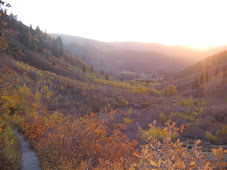The Trib's Out of Context blog had an interesting item last Friday that seems to have gone under the radar with all of the important happenings of the last few days.
http://blogs.sltrib.com/utahpolitics/2008/02/sandy-could-hit-up-new-school-district.htm
Friday, February 01, 2008
Sandy could hit up new school district for stadium money
Salt Lake County might foil Sandy's plans to snare $10 million of property-tax rebates for Real Salt Lake, but there is a yet-to-be-created taxing entity that still could pitch in:
A new school district.
In 2006, RSL vowed not to ask the Jordan School District to give up its portion of new taxes hatched by the stadium's development, dropping the potential revenue from Sandy's Community Development Area from $15 million to $8 million. Now the county -- which already has forked over $35 million in hotel taxes for the stadium project -- could slash a possible $10 million bond to $4 million if it opts out.
But Sandy, along with other east-side cities, ditched the Jordan School District with a public vote last November. School board members for the unofficially named Canyons School District will be elected this summer.
"There is no longer a Jordan School District" in Sandy, Randy Sant, the city's economic-development director, said recently. "It's always possible for us to go back and ask the [new district board]" for its share of new stadium taxes.
Sandy plans to issue a bond -- in whatever amount can be garnered from the CDA -- on or before July 1. But "there's nothing in the law" that would prevent the city from amending its CDA later, Sant said.
-- Rosemary Winters
Can they really be serious? The new district faces huge start-up costs and the two halves are arguing over current money and assets:
http://www.sltrib.com/news/ci_8161863
So of course the new district will have a spare 6 million to pay investors who paid 70+ million dollars, but just can't afford this last little bit without a handout. Maybe Sandy Republicans could just pro-actively ditch Rep. Curtis or Rep. Hughes and get Randy Sant elected. He would come without some of the voucher baggage and looks sure to walk lockstep with any big business benefit proposals that come up.
As I'm shaking my head over that one, I'll continue shaking it over a post at the Utah Taxpayer's Association blog that made a lot of sense to me. The post condemned the RDA money being taken from Granite School District for the Cottonwood Mall renovation.
http://utahtaxpayer.blogspot.com/2007/12/why-cottonwood-mall-rda-is-just-plain.html#comments
The use of RDA's on already attractive commercial property does seem cannibalistic and regressive in terms of total tax money brought in.
As for the effects on the district, I am confused. At first blush, it just seems totally outrageous to give millions in education money to a developer. But I tried to read a lot of the articles and comments about the project, and now I think I might understand how the project is a least semi-palatable. I can't attribute this properly and the numbers may be fuzzy because I'm getting these numbers from some comments...on some article I read...somewhere. Sorry. I'm really thinking about the concept more than the specific numbers anyway. One RDA advocate said that the mostly empty property brings in something like $75,000 a year now. The district wouldn't actually put any money into development, but when the property started generating millions of dollars of tax revenue, the district wouldn't collect 50+ million dollars of revenue over 20 years. The district would receive something like $900,000 a year, thus increasing their current income by quite a bit, and then all of the millions when the terms of the RDA expire in 20 years. (And the commenter beneath the UTA blog post claims school district revenues would go up 500% which seems higher than any estimates I've seen in articles.) Seen in this light (I would love to know how accurate this scenario is. Anyone have a link to the text of the agreement that the Granite Board approved?), the RDA seems to make financial sense for the district.
BUT...the UTA post makes a couple of excellent points.
First, if the money generated is actually just redistributed from sales that would otherwise have taken place in Salt Lake, Jordan, or Murray School District, then Granite is just paying a developer to take money from other school districts. The millions in new tax revenue have to actually be "new" rather than just "new to the Cottonwood Area" for the benefits to be real.
Second, the huge increase scenarios depend on the assumption that the land would just sit undeveloped like it is currently for 20 years. That doesn't seem realistic to me, and the examples cited in the UTA post seem to reasonably refute that assumption. The money quote:
The proposed Cottonwood Mall RDA will not create one job, not one residence. Not one. Every square foot of retail and residential space General Growth Properties (GGP) plans on putting in this space will be built somewhere by someone without a subsidy. That’s because residential and retail development follows population and disposable income. Houses and retail developments will naturally go where people are and have money to spend. Subsidizing a developer to build residential or retail space in this place simply rearranges where this retail and residential space goes. In essence, GGP wants to take nearly $100 million—most of it from the Granite School District. In exchange, they’re not giving a single thing—because this retail and residential space will be done whether a subsidy is provided or not.
Holladay says the revenue stream they are projecting amounts to “found” money. That is simply not true. Holladay City and GGP didn’t discover hundreds of thousands of dollars just waiting for a right-thinking “investor” to pick up. They want to steal this retail and residential development from another city, perhaps Taylorsville, South Salt Lake, West Valley City or Magna, and put it on their land.
So the new RDA seems wrong in that it is specifically designed to siphon money from other districts, and that the current revenues will inevitably increase along with development without forfeiting more than 50 million dollars to a developer, albeit at a slower rate.
Help me out here. What am I missing?
(This post does not imply an endorsement of UTA's other screwy numbers about schools.=) )



No comments:
Post a Comment